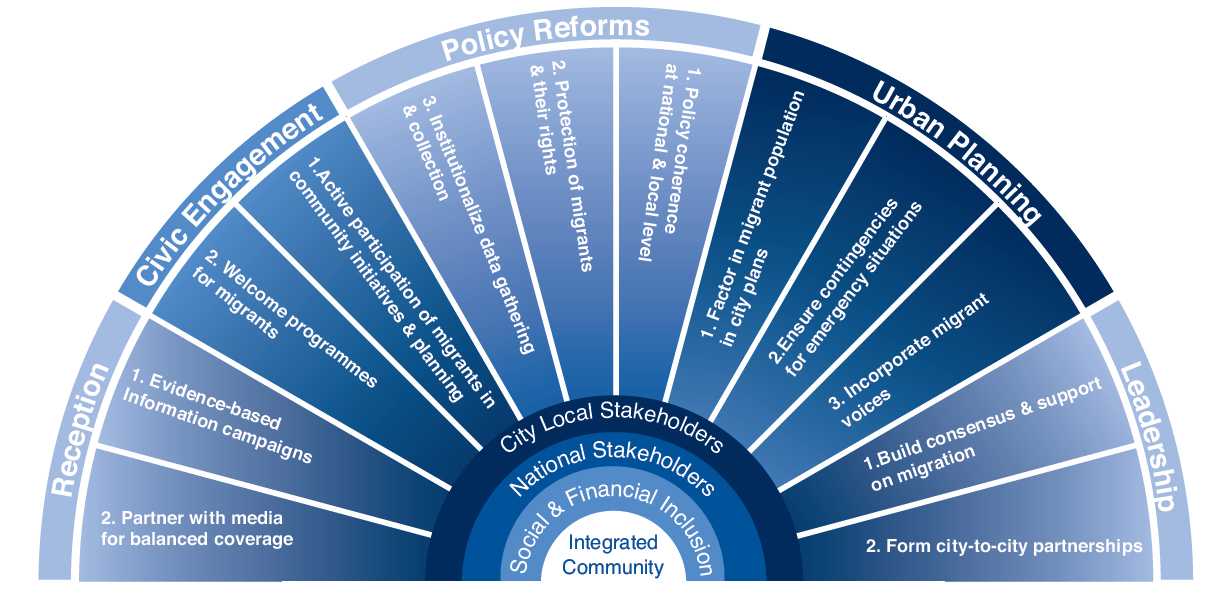
Photo: Migration-Preparedness-Framework
How cities can better cater to migrants
09 November 2017
by Barbara Szewcow
A new report has been released to help cities deliver urban infrastructure and services to meet the needs of migrants and achieve long-term migrant integration.
The World Economic Forum (WEF) report, Migration and Its Impact on Cities, covers the different types and causes of migration. Through 22 city case studies–including New York, Cape Town, Amman and Sao Paulo–it highlights the most affected corridors and cities, the impact on urban infrastructure and services, and the practical solutions.
These solutions include those implemented or initiated to meet the needs of the migrant population, particularly in the delivery of vital urban infrastructure and services–housing, education, health, employment, integration and social cohesion, and safety and security.
“The framework for migration preparedness provided in our [report], caters to both cities in the developed world as well those in the developing world,” Dilip Guna, Project Collaborator told Cities Today.
The framework covers five dimensions that need most attention by city leaders:
- Perception–to counter increasing stigmatisation and incident bases biases in European and American cities with scientific evidence and research
- Civic engagement–to ensure migrant participation and integration right from their arrival
- Policy reform–to create a coherent and transparent policy on managing migration, migrant rights and obligations, and data collection, based on consensus between all levels of government
- Urban planning–to foster migrant inclusive city design and preparedness for emergency situations
- Leadership style to promote responsible and responsive, outward looking and action oriented administration, based on partnership with other cities.
“Each city that is affected by migration, developed or developing, will have to work on these dimensions,” said Guna. “However, the extent to which a dimension needs priority over the other will depend on the socio-economic, political, and environmental factors at play in that city.”
Housing issue
Each of the 22 participants identified the key challenges related to migration. Housing is mentioned as the major problem for most cities. For European cities, the issue was aggravated by the influx of immigrants, mainly refugees, in 2015.
“The challenges to be addressed are three-fold: providing short-term temporary housing while also planning for long-term housing of involuntary migrants should they be granted legal status to live in their arrival city, financing of these projects, and optimised land use for housing,” commented Alice Charles, Lead and Urban Development Global Leadership Fellow at WEF.
Hamburg’s initiative of confiscating and converting vacant commercial and residential properties into migrant shelters and Rotterdam’s attempt to attract high income settlers through building better structures in the poorest parts of the city are mentioned as examples of dealing with the housing challenge.
Future challenges
Charles urged cities to encourage private sector engagement in dealing with refugee related challenges and listed possibilities for the private sector to get involved.
“One, as advisors to the government,” she said. “Second, as enablers in providing for basic urban services to refugees through corporate social responsibility initiatives, and third, as active funding partners to monitor and evaluate the effectiveness of initiatives while also addressing the interests of the private sector.”
The report also mentions that there is little research and debate on internal migration.
“City leaders need to recognise that urban infrastructure and services in a city are impacted whether a migrant is internal or international,” noted Guna.
The World Economic Forum through the cross-industry Future of Urban Development and Services Initiative serves as a partner in transformation to cities around the world as they seek to address major urban challenges and become smarter and more sustainable.







